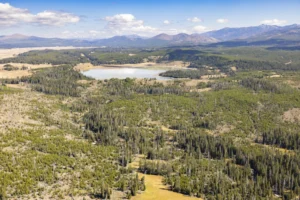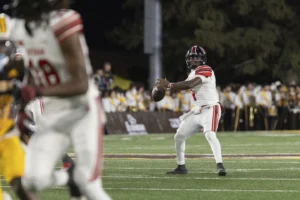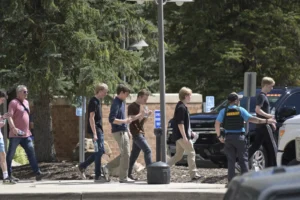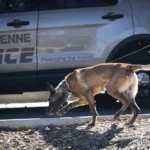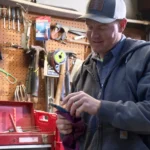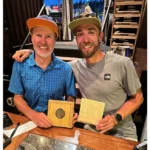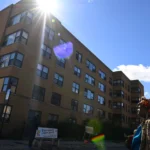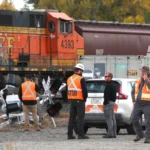Business Council Leader Discusses Concerns and Accomplishments of the Eastern Shoshone Tribe
Lack of space for cultural preservation, community engagement seen as issues
- Published In: Other News & Features
- Last Updated: Dec 23, 2022

By Shen Wu Tan
Special to the Wyoming Truth
Native American issues have made Wyoming headlines this year, whether it’s news about repatriation efforts to return hair samples of Shoshone and Arapaho people from a university museum or state legislation’s attempts to create an alert system that could help Indigenous people who go missing.
John St. Clair, a member of the Eastern Shoshone Tribe and a resident of Fort Washakie on the Wind River Reservation, strives to strengthen the tribal nation in Wyoming. He serves as the chairman of the Eastern Shoshone Business Council, having first been elected to the council in 2020.
A graduate of the University of Wyoming, St. Clair earned his law degree and became a member of the Wyoming State Bar in 1981. He worked as a private attorney and legal consultant early in his career, helping investigate irregularities on royalty reporting and accounting by oil companies on the reservation, which led to the enactment of the 1982 Indian Mineral Leasing Act.
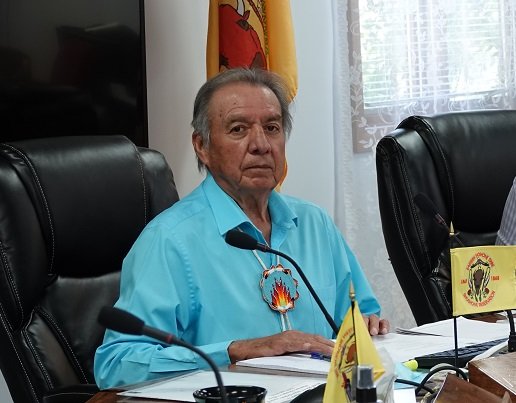
St. Clair served as the chief judge of the Shoshone and Arapaho Tribal Court for 35 years on the Wind River Reservation. In 1988, he wrote the Shoshone and Arapaho law and order code, which is still used by both tribes.
Prior to his legal career, St. Clair was drafted into the U.S. Army in 1966 and commissioned as an officer. While in Vietnam, he was awarded a Combat Infantry Badge, two Purple Hearts and two Bronze Stars.
The Wyoming Truth reached out to St. Clair regarding the challenges facing the Eastern Shoshone Tribe. What follows are excerpts from the interview.
What are some issues that your tribe and other Native American communities in Wyoming are currently dealing with? Are there any ongoing efforts to address them?
St. Clair: One of our biggest challenges at the moment is the lack of space for cultural preservation and community engagement. Our goal is to obtain grant funding that will help us build a cultural center that will also house our archives, our Historic Preservation Office, and offer space for exhibits, community gatherings, cultural classes, media rooms, research areas, and for the proper storage of our historical artifacts. We have hired a grant consultant to help us with these efforts.
We need the space and equipment that will help us preserve our culture and history. For instance, our Chokecherry or Rabbit dances are a big part of who we are. We envision community members coming together to record not only the actual dance, but educate the youth and gather historical information that we can record and keep for future generations. There’s more to these than just the songs. We hope future generations can relearn them, use them and help us not forget them. How are they danced? Why are they danced? Who dances them? How can we preserve that? This is the existence of the tribe. A cultural facility will not only meet our needs of preserving our culture and language, but hopefully be something the younger people will look to learn more about themselves and who they are.
We also have other facilities on the reservation that need to be renovated and improved. They’re old and others can no longer be used. Many of them are owned jointly by the Eastern Shoshone and Northern Arapaho Tribes, so we need to come together, pursue funding and decide on our facility improvements. One obstacle is that the joint tribes as the Wind River Inter-Tribal Council does not receive federal funding; therefore the tribes each contribute to running our joint programs. There are many joint programs such as solid waste, water, roads, and our court system. We have voiced this concern with many politicians at the federal level.
Any recent accomplishments of the Eastern Shoshone Tribe that you would like to highlight?
St. Clair: In 2021, the Shoshone and Arapaho Tribes took over their Circle Ridge Oil and Gas Field on the Wind River Indian Reservation. This summer marked a year since our full ownership status began, and we have been pleased with how well the field has been up and running. Our new operator MI3 Petroleum Engineering has played a huge role in making that happen.
We’re also excited to see a new hospital in our Eastern Shoshone Business Park, located in Riverton. The dedicated group of community members leading the effort recently received word that additional funding will be granted, thus advancing their process in building a much-needed hospital for Riverton. This year, we continued developing the infrastructure, and we’re planning for housing units that can be built at the business park. A new residential district within the business park will not only help hospital staff find homes, but also provide housing for medical staff that will be working in Fort Washakie. Our plan is to move our medical services to a 638 contract to be under the direction of the Shoshone Business Council.
In October, the tribal relations committee discussed a bill about missing person alert systems. Is there a strong enough alert system in place when a member of the Native American community in Wyoming goes missing?
St. Clair: The bill that was discussed by the Select Committee on Tribal Relations [on] October 18, 2022 was proposed legislation for an Ashanti Alert Act. It would focus on individuals over the age of 17 with special needs or circumstances of those who are endangered or who have been abducted or kidnapped. The current Amber Alert system applies only to children. It does not cover adults. The proposed legislation would fill the need for an alert system for Native American adults who go missing. The Eastern Shoshone Tribe supports it.
Gov. Gordon has dispatched a task force to address the problem of missing or murdered Indigenous people. What is actually being done?
St. Clair: The task force established by Governor Gordon is an ongoing effort that will consist of public meetings, research to obtain funding and efforts to enact Ashanti Alert legislation. Although this is a good start, there needs to be closer coordination between law enforcement agencies in locating missing persons. Time is of the essence; therefore, there should be an immediate response when someone goes missing. We will continue to participate in these meetings and provide input.
In May, the U.S. Department of Interior released a report about federal boarding schools for Native Americans showing that Wyoming had a few of these schools. What, if anything, should the government do to make amends?
St. Clair: All Native families, including those of the Eastern Shoshone Tribe have been impacted by those schools. Because they operated as a tool for assimilation, they prohibited the speaking of the language and native dress, including long hair. These requirements were strictly enforced by physical punishment. The generation that experienced this did not extend Native culture to their children, resulting in the loss or near loss of languages. Today, many tribes are attempting to revive them by recording elders who retained them, despite being punished for speaking.
It’s necessary for tribes to receive the support of the federal government to create language revitalization programs, preservation guidance and develop other methods of helping tribal communities regain their tribal identity. Repatriation also remains as a key factor in this, and artifacts or remains of children should be returned to their respective families and tribes.




